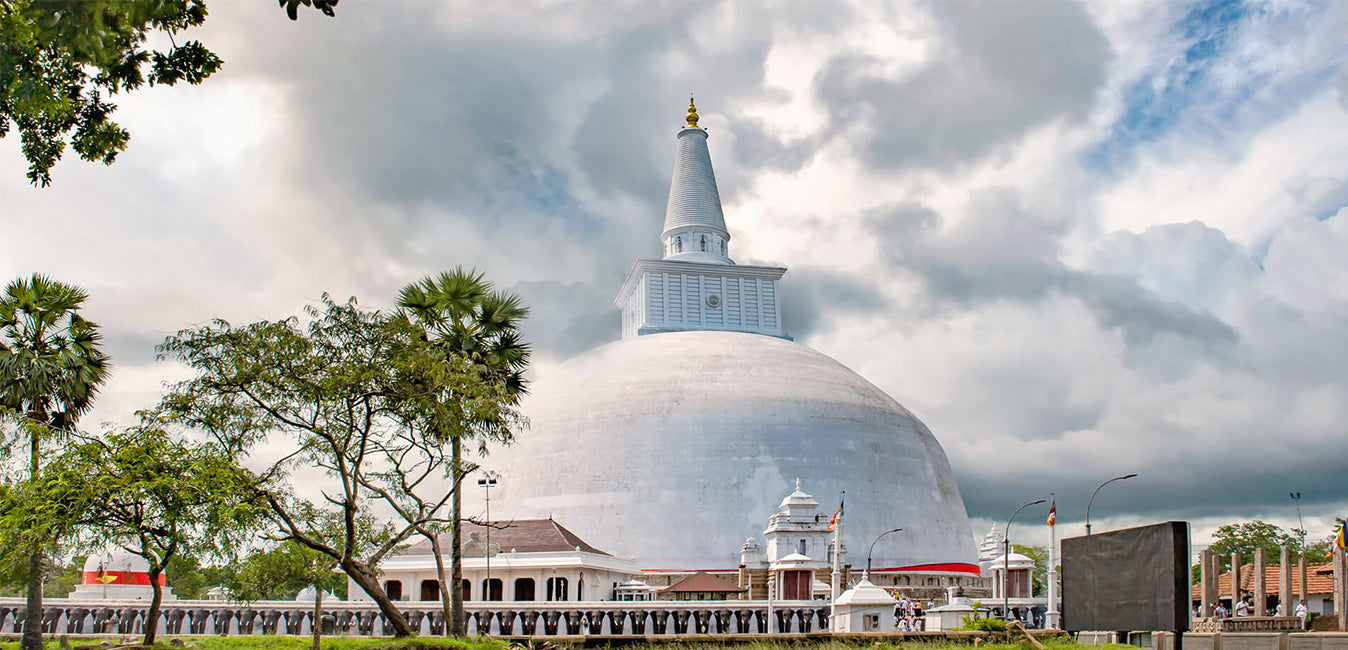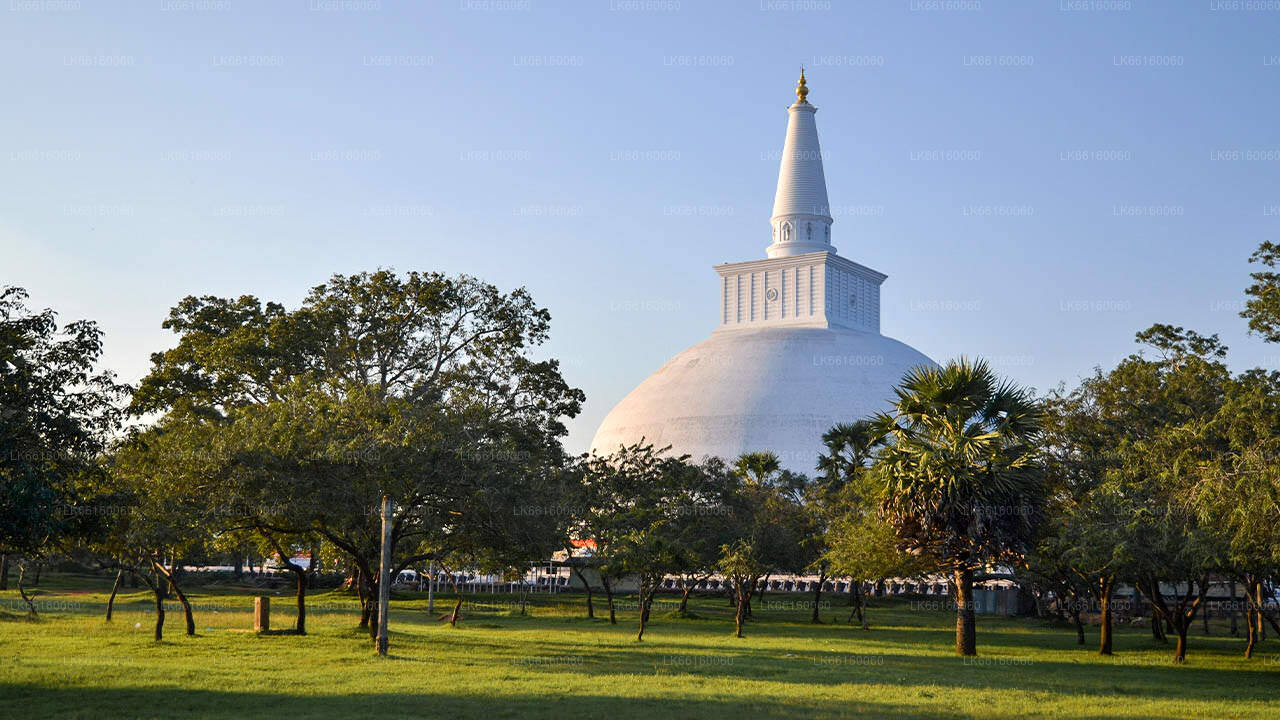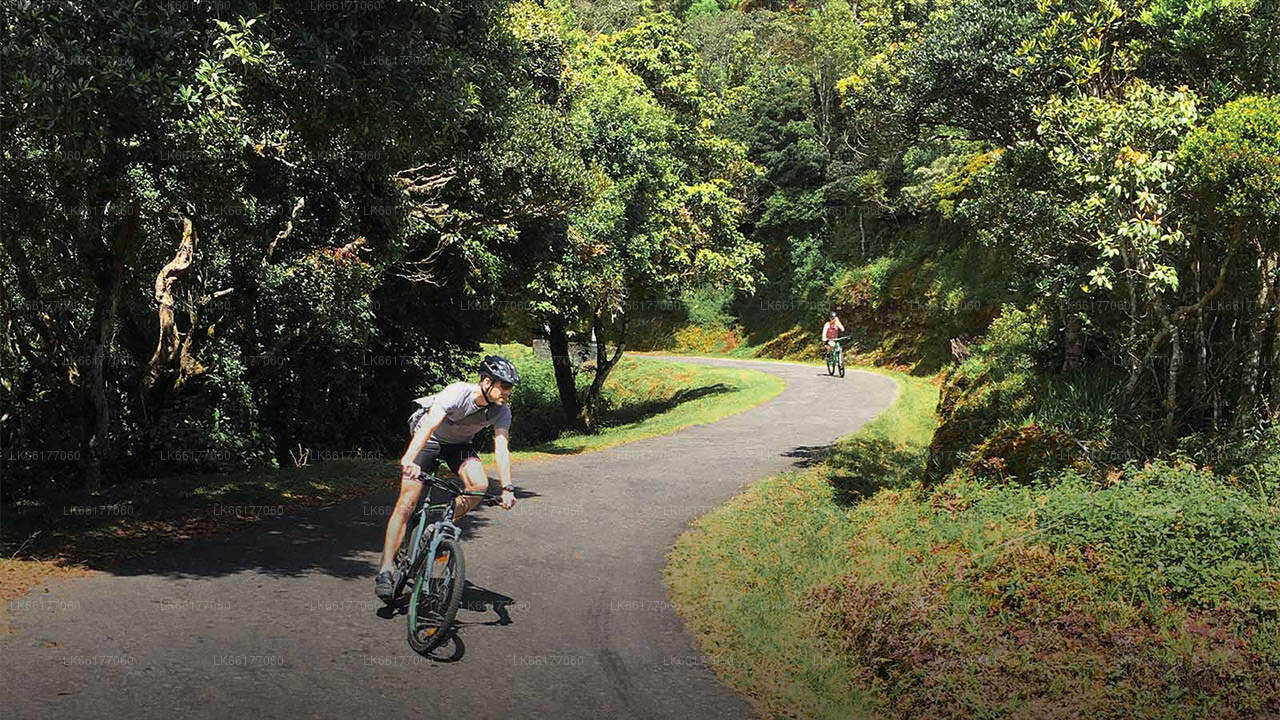
Cidade de Anuradhapura
Anuradhapura pertence à Província Centro-Norte do Sri Lanka. É uma das antigas capitais do Sri Lanka, famosa por suas ruínas bem preservadas da antiga civilização cingalesa. A cidade, agora Patrimônio Mundial da UNESCO, fica 205 km ao norte da atual capital, Colombo, no Sri Lanka.
Nuwara Wewa



Nuwara Wewa is an ancient reservoir located in Anuradhapura, in Sri Lanka’s North Central Province. Built around the 1st century BC by King Vattagamini (Valagamba), it is the largest tank (man-made lake) within the city. The reservoir lies on the eastern side of Anuradhapura and has formed a key part of the city’s historic layout.
The water body covers approximately 12 square kilometers and is supported by a bund (embankment) which controls its water level and flow. The surroundings include ancient ruins, shrines, and green embankments planted with trees. The ecosystem around the lake supports various bird species (including migratory birds), aquatic flora, and some small wildlife that rely on the wetland edges.
Visitors to Nuwara Wewa often enjoy walking or cycling along the bund, watching sunrise or sunset reflected in the calm waters, birdwatching, and photography. The reservoir also offers serene spots for relaxation and contemplation away from the busier parts of Anuradhapura. Being near several significant archaeological sites, it is often included in cultural and historic tours.
Nuwara Wewa is accessible throughout the year, though the period following the monsoon seasons yields fuller water levels and greener surroundings. Dry seasons reduce the inflow and may lower water level, altering the scenery somewhat. The site is easily reached by road from the center of Anuradhapura, with walking paths and small roads leading to its embankments. Best visiting times are early morning or late afternoon when temperatures are moderate and light is optimal.
Sobre o distrito de Anuradhapura
Anuradhapura pertence à Província Centro-Norte do Sri Lanka. Anuradhapura é uma das antigas capitais do Sri Lanka, famosa por suas ruínas bem preservadas da antiga civilização cingalesa. A cidade, agora Patrimônio Mundial da UNESCO, fica 205 km ao norte da atual capital, Colombo, no Sri Lanka. Na cidade sagrada de Anuradhapura e nas proximidades, há um grande número de ruínas. As ruínas consistem em três classes de edifícios: dagobas, edifícios monásticos e pokuna (lagos). A cidade possuía alguns sistemas de supervisão mais complexos do mundo antigo; Situado na zona seca do país, a administração construiu muitos tanques para irrigar a terra. A maioria dos civis é cingalesa, enquanto os tâmeis e mouros do Sri Lanka vivem no distrito.
Sobre a Província Centro-Norte
Província Centro-Norte, que é a maior província do país, cobre 16% da área total do país. A Província Centro-Norte consiste em dois distritos chamados Polonnaruwa e Anuradhapure. Anuradhapura é o maior distrito do Sri Lanka. Sua área é de 7.128 km². A Província Centro-Norte tem vários potenciais para investidores iniciarem seus negócios, especialmente agricultura, agroindústrias e setores pecuários. Mais de 65% da população da Província Centro-Norte depende da agricultura básica e das agroindústrias. O NCP também é chamado de "Wew Bendi Rajje" porque há mais de 3.000 tanques de médio e grande porte situados na província. Sri maha bodiya, Ruwanweli seya, Thuparama dageba, Abayagiri Monastry, Polonnaruwa Rankot wehera, Lankathilake estão assustados














